How To Draw Equipotential Line In Latex
The electric field lines and equipotential surfaces of a indicate charge.
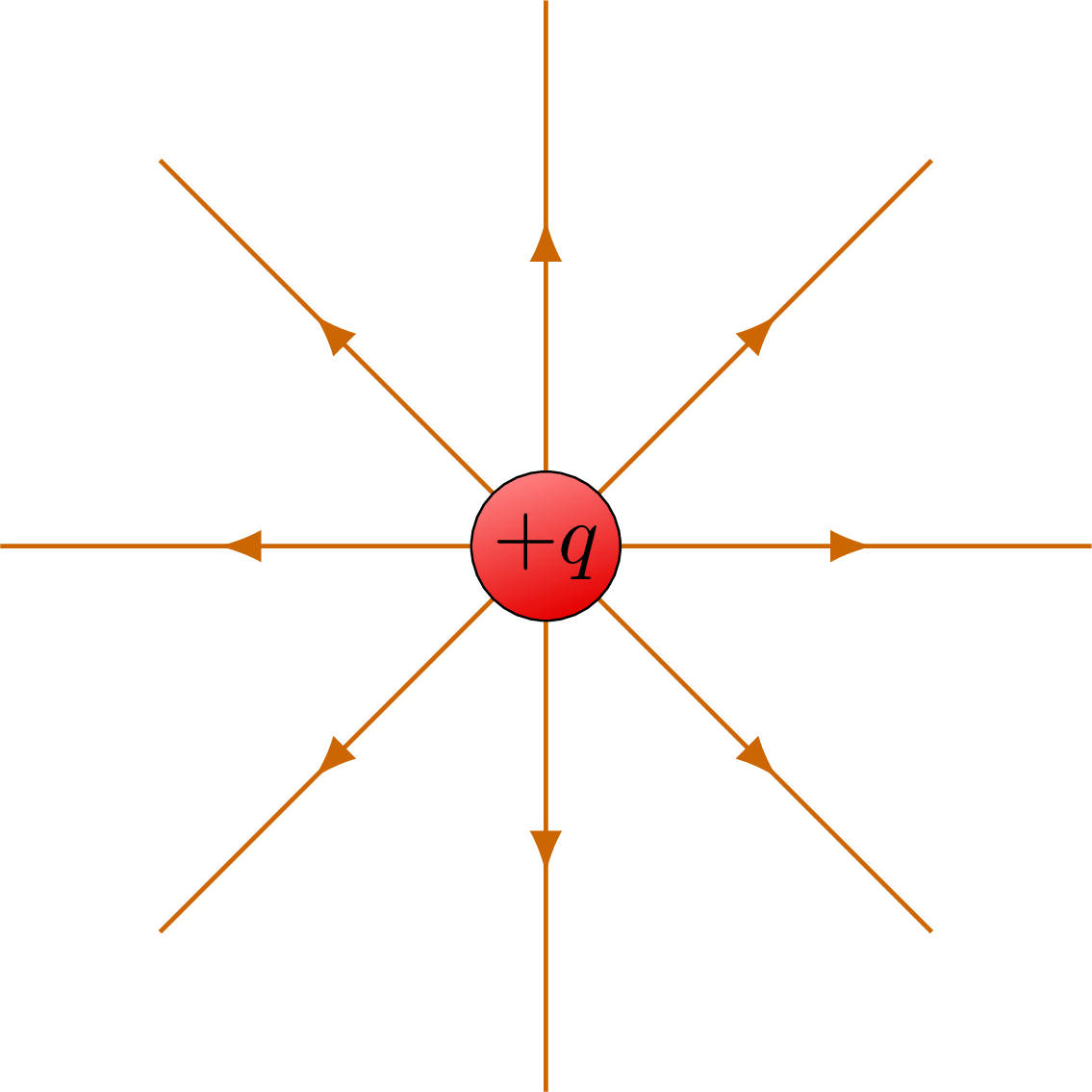
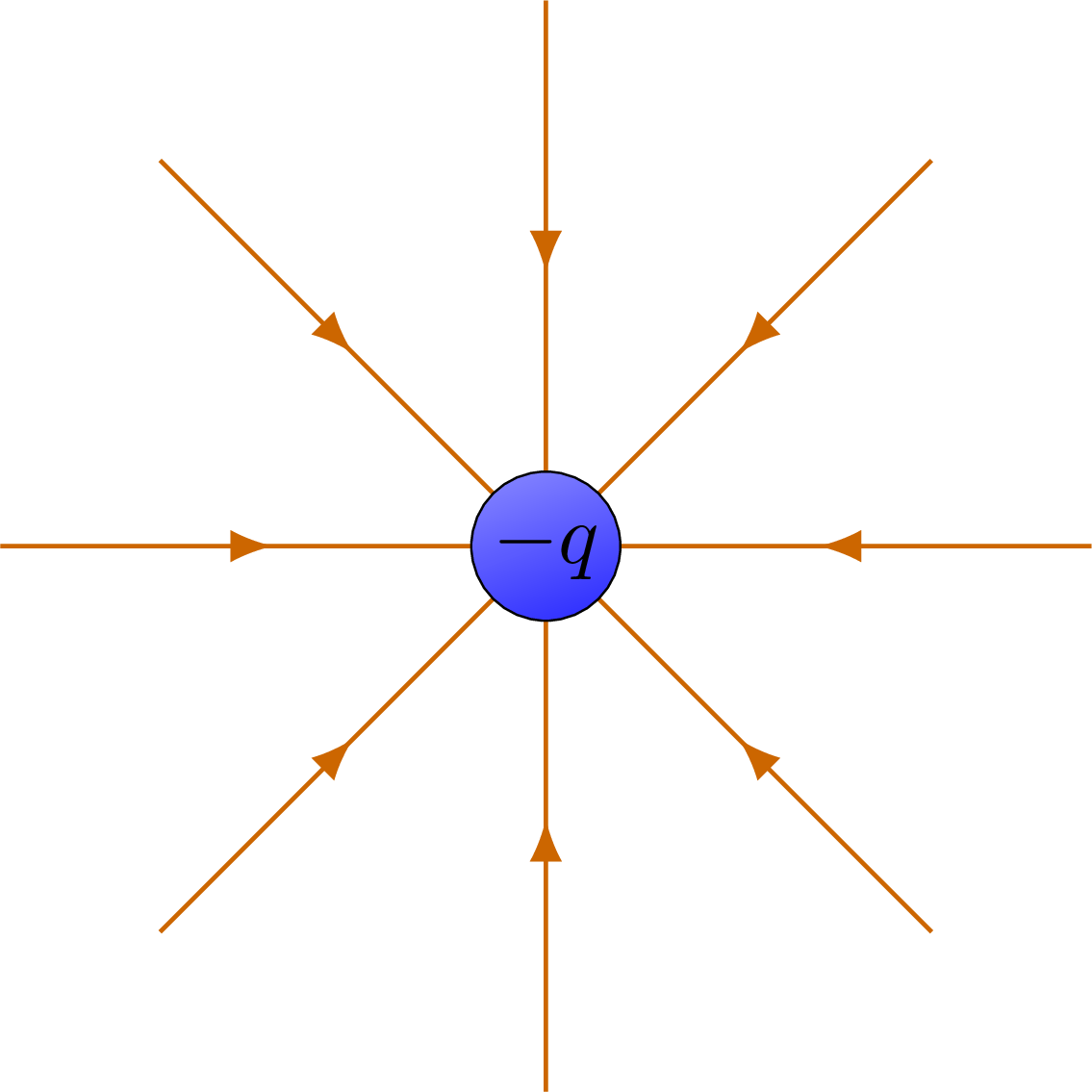
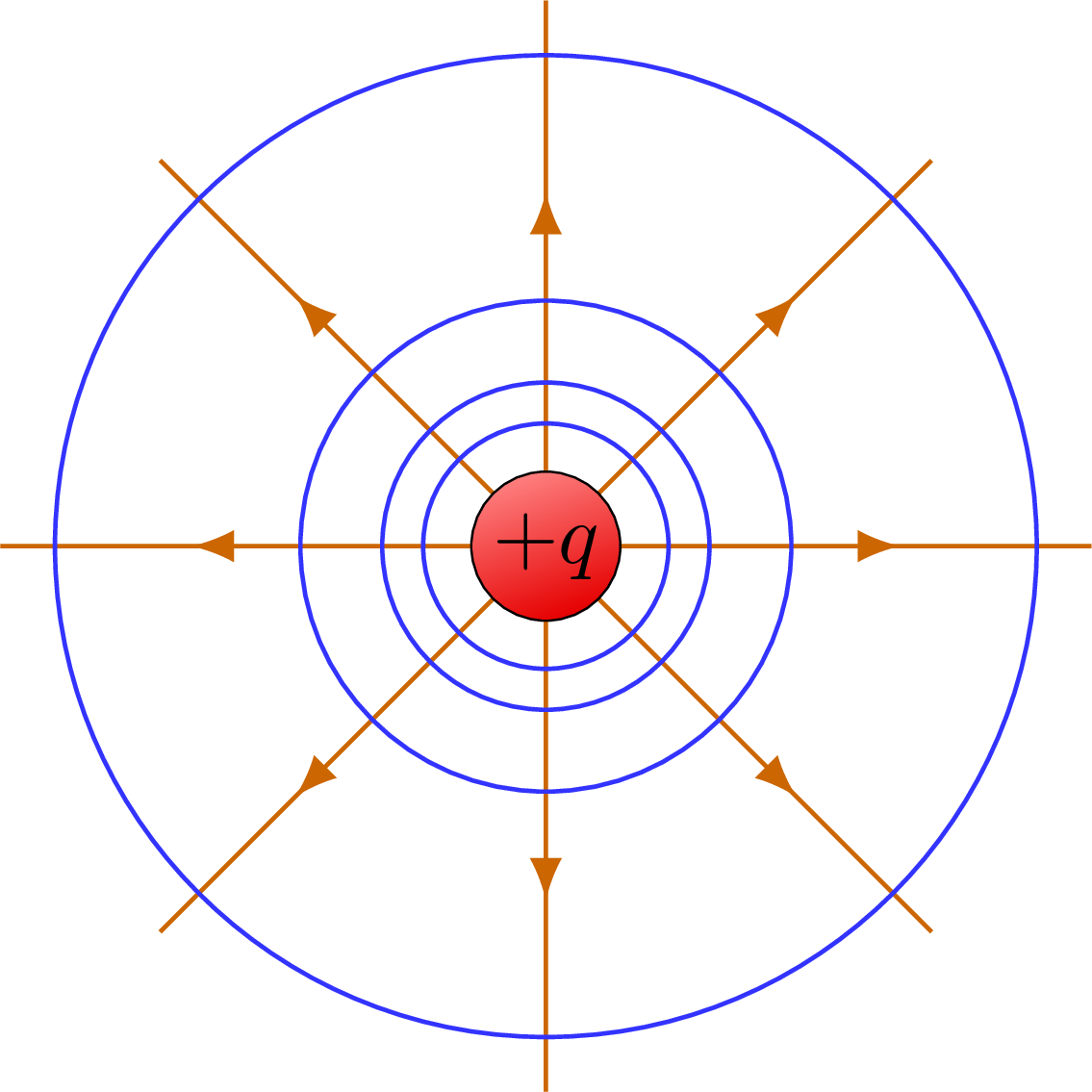
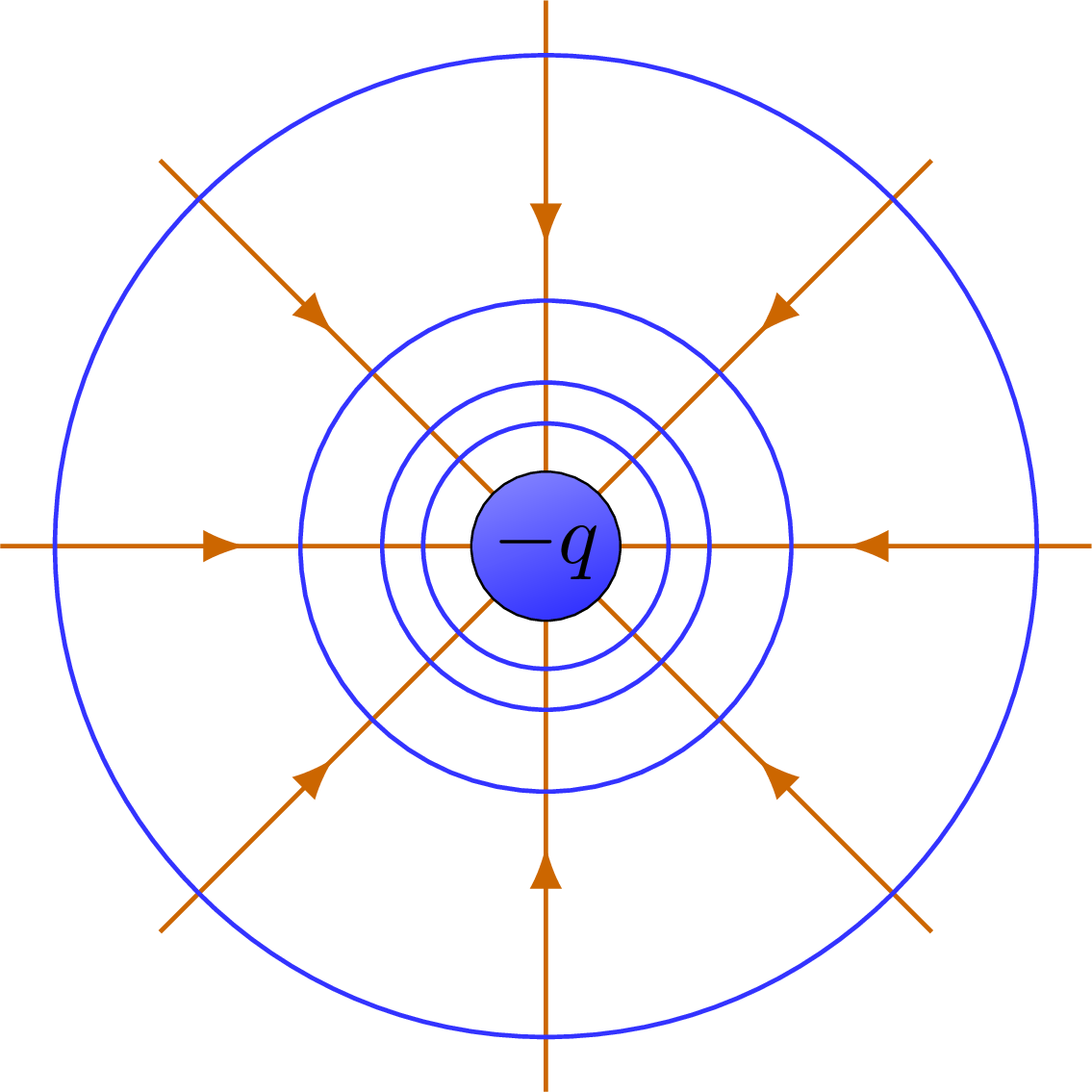
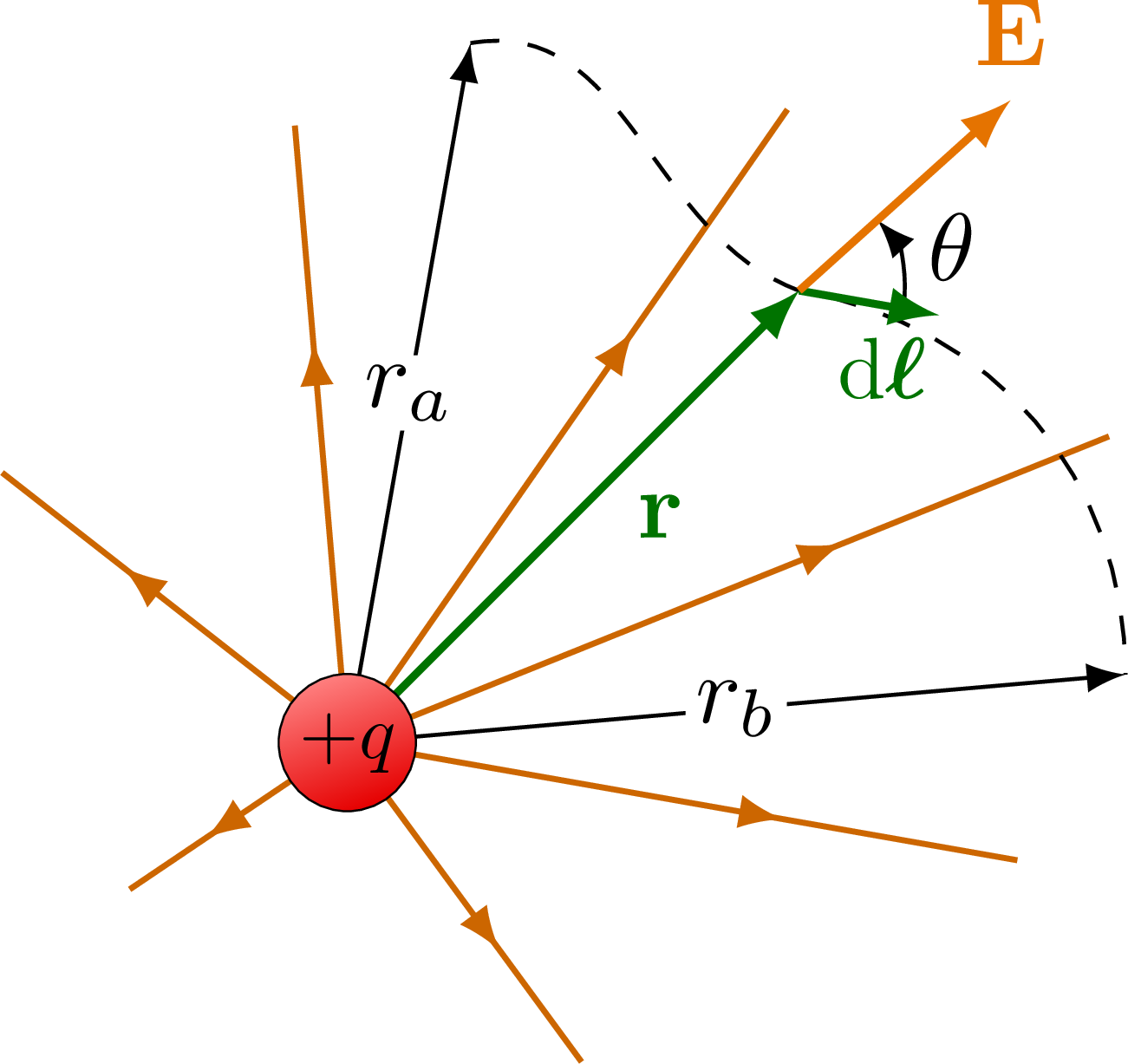
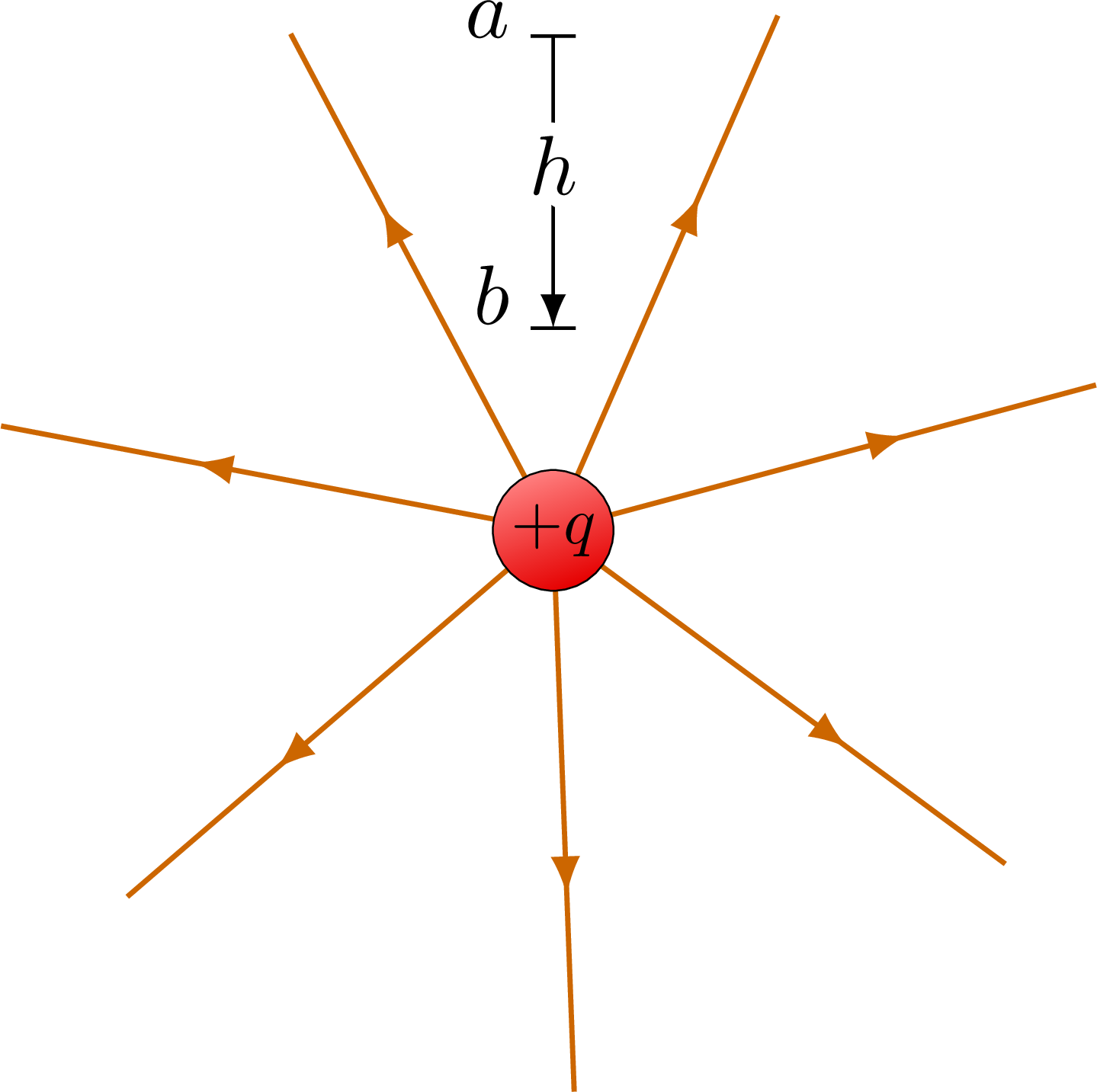
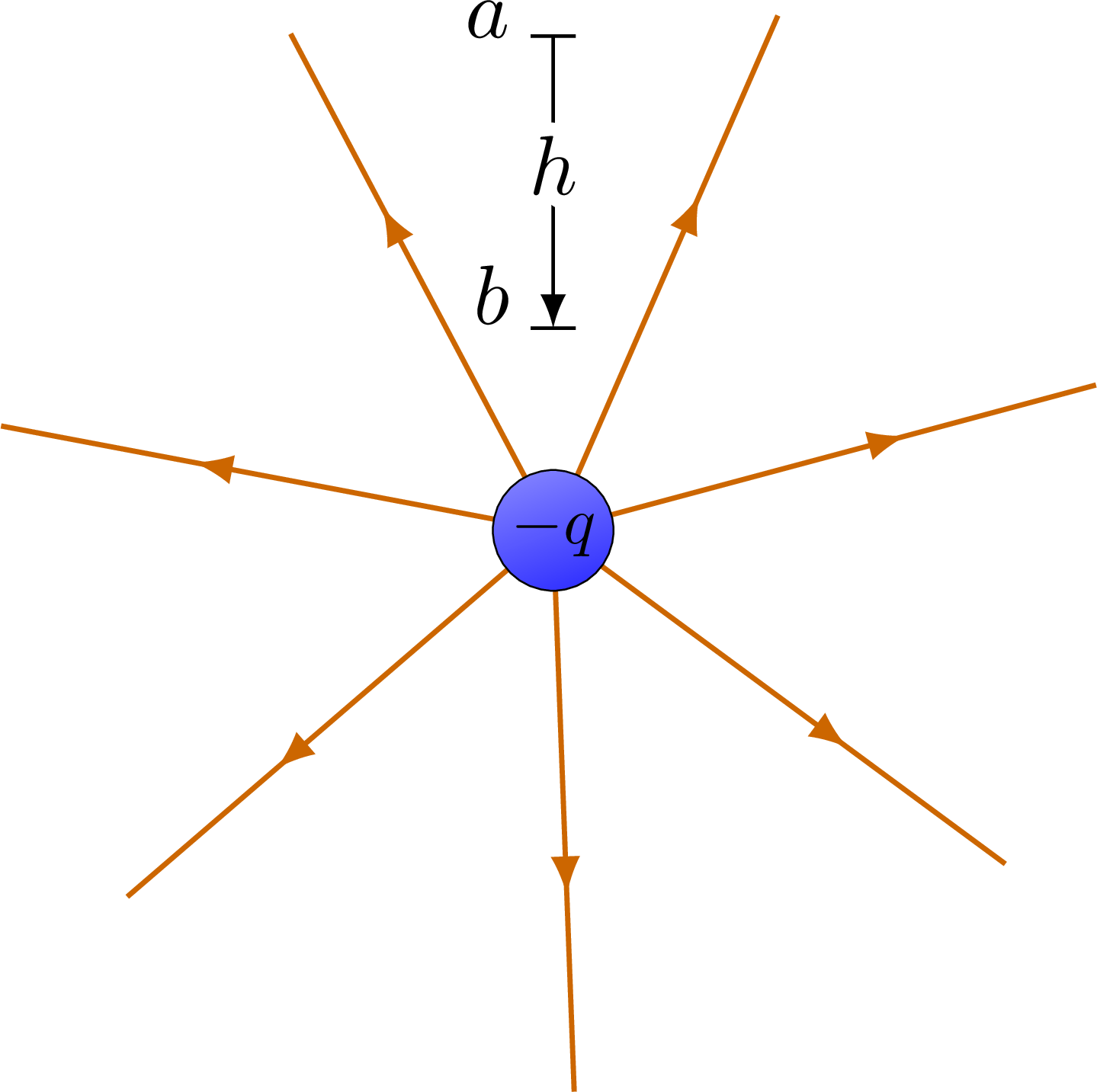
Edit and compile if you like:
% Author: Izaak Neutelings (July 2018) % page 8 https://archive.org/details/StaticAndDynamicElectricity % https://tex.stackexchange.com/questions/56353/excerpt-x-y-coordinate-of-an-capricious-point-on-curve-in-tikz % https://tex.stackexchange.com/questions/412899/tikz-calculate-and-store-the-euclidian-altitude-between-two-coordinates \documentclass[border=3pt,tikz]{standalone} \usepackage{physics,bm} \usepackage{tikz,pgfplots} \tikzset{>=latex} % for LaTeX arrow caput \pgfplotsset{compat=1.xiii} \usetikzlibrary{decorations.markings,intersections,calc} \usepackage[outline]{contour} % glow effectually text \usetikzlibrary{angles,quotes} % for moving-picture show (angle labels) \usepackage{xcolor} \colorlet{Ecol}{orange!90!black} \colorlet{EcolFL}{orange!eighty!blackness} \colorlet{Bcol}{blue!xc!black} \tikzstyle{EcolEP}=[blue!80!white] \colorlet{veccol}{green!45!blackness} \tikzstyle{charge+}=[very thin,top color=scarlet!50,bottom colour=red!xc!black,shading bending=20] \tikzstyle{charge-}=[very thin,height color=blue!fifty,bottom color=blueish!80,shading bending=20] \tikzstyle{vector}=[->,thick,veccol] \tikzset{EFieldLineArrow/.fashion={EcolFL,decoration={markings,marking=at position #1 with {\arrow{latex}}}, postaction={decorate}}, EFieldLineArrow/.default=0.5} \def\R{1.eight} \def\NE{8} \def\NV{4} \contourlength{1.6pt} \brainstorm{document} % POINT Charge +i \begin{tikzpicture} \foreach \i [evaluate={\angle=(\i-1)*360/\NE;}] in {1,...,\NE}{ \draw[EFieldLineArrow={0.half dozen}] (0,0) -- (\bending:\R); } \draw[accuse+] (0,0) circle (7pt) node[black,calibration=0.viii] {$+q$}; \finish{tikzpicture} % POINT CHARGE -1 \brainstorm{tikzpicture} \foreach \i [evaluate={\bending=(\i-1)*360/\NE;}] in {1,...,\NE}{ \draw[EFieldLineArrow={0.five}] (\angle:\R) -- (0:0); } \draw[charge-] (0,0) circumvolve (7pt) node[black,scale=0.8] {$-q$}; \end{tikzpicture} % Indicate Charge +1 - equipotential \begin{tikzpicture} \foreach \i [evaluate={\angle=(\i-one)*360/\NE;}] in {ane,...,\NE}{ \describe[EFieldLineArrow={0.65}] (0,0) -- (\angle:\R); } \foreach \i [evaluate={\r=0.9*\R/\i;}] in {1,...,\NV}{ \draw[EcolEP] (0,0) circle (\r); } \draw[charge+] (0,0) circle (7pt) node[black,calibration=0.8] {$+q$}; \end{tikzpicture} % POINT CHARGE -i - equipotential \brainstorm{tikzpicture} \foreach \i [evaluate={\angle=(\i-1)*360/\NE;}] in {ane,...,\NE}{ \depict[EFieldLineArrow={0.45}] (\bending:\R) -- (0,0); } \foreach \i [evaluate={\r=0.ix*\R/\i;}] in {1,...,\NV}{ \draw[EcolEP] (0,0) circle (\r); } \draw[accuse-] (0,0) circle (7pt) node[black,scale=0.8] {$-q$}; \end{tikzpicture} % Signal CHARGE +one - integration \begin{tikzpicture}[scale=1.3] \def\NE{7} \def\R{2.0} \def\a{1.half dozen} \def\b{i.iv} \coordinate (O) at (0,0); \coordinate (P) at (45:0.ix*\R); \coordinate (L) at ($(P)+(-10:0.twenty*\R)$); \coordinate (E) at ($(P)+(42:0.four*\R)$); \foreach \i [evaluate={\ang=15+(\i-1)*360/\NE;}] in {1,...,\NE}{ \draw[EFieldLineArrow={0.65},line width=0.6] (0,0) -- ({0.3*\R+\a*cos(\ang)},{0.25*\R+\b*sin(\ang)}); } \draw[->] (O) -- (80:1.0*\R) coordinate (A) node[midway,fill=white,inner sep=i] {$r_a$}; \draw[->] (O) -- (5:i.1*\R) coordinate (B) node[midway,fill up=white,inner sep=1] {$r_b$}; \describe[thin,dashed] (A) to[out=ten,in=160] (P) to[out=-10,in=xc] (B); \draw[vector] (O) -- (P) node[midway,right=nine,beneath=-half-dozen] {$\vb{r}$}; \draw moving-picture show[->,"$\theta$",draw=black,angle radius=11,angle eccentricity=1.5] {angle = 50--P--East}; \describe[vector] (P) -- (L) node[above=2,left=6,below=one,scale=0.9] {$\dd{\bm{\ell}}$}; \draw[vector,Ecol] (P) -- (E) node[above] {$\vb{Eastward}$}; \depict[charge+] (O) circle (five.5pt) node[blackness,scale=0.8] {$+q$}; \terminate{tikzpicture} % POINT CHARGE +1 - potential \def\NE{seven} \def\a{0.04*\R} \def\R{1.8} \begin{tikzpicture}[scale=one.iii] \foreach \i [evaluate={\bending=xv+(\i-1)*360/\NE;}] in {1,...,\NE}{ \depict[EFieldLineArrow={0.65},line width=0.6] (0,0) -- (\bending:\R); } \draw[accuse+] (0,0) circle (5.5pt) node[black,scale=0.8] {$+q$}; \draw[thin] (90:0.88*\R) coordinate (A) --++ (\a,0) --++ (-two*\a,0) node[above=2,left=-i] {$a$}; \depict[sparse] (90:0.36*\R) coordinate (B) --++ (\a,0) --++ (-2*\a,0) node[in a higher place=iv,left=-one] {$b$}; \draw[->] (A) -- (B) node[midway,above=-5] {\profile{white}{$h$}}; \end{tikzpicture} % POINT CHARGE -1 - potential \begin{tikzpicture}[scale=1.iii] \foreach \i [evaluate={\angle=15+(\i-1)*360/\NE;}] in {1,...,\NE}{ \describe[EFieldLineArrow={0.65},line width=0.6] (0,0) -- (\angle:\R); } \draw[charge-] (0,0) circle (v.5pt) node[black,scale=0.8] {$-q$}; \draw[sparse] (90:0.88*\R) coordinate (A) --++ (\a,0) --++ (-2*\a,0) node[in a higher place=two,left=-1] {$a$}; \draw[thin] (ninety:0.36*\R) coordinate (B) --++ (\a,0) --++ (-2*\a,0) node[above=4,left=-1] {$b$}; \draw[->] (A) -- (B) node[midway,above=-5] {\contour{white}{$h$}}; \end{tikzpicture} \end{document} Click to download: electric_fieldlines1.tex • electric_fieldlines1.pdf
Open in Overleaf: electric_fieldlines1.tex
Source: https://tikz.net/electric_fieldlines1/
Posted by: holcombwhopribed.blogspot.com


0 Response to "How To Draw Equipotential Line In Latex"
Post a Comment